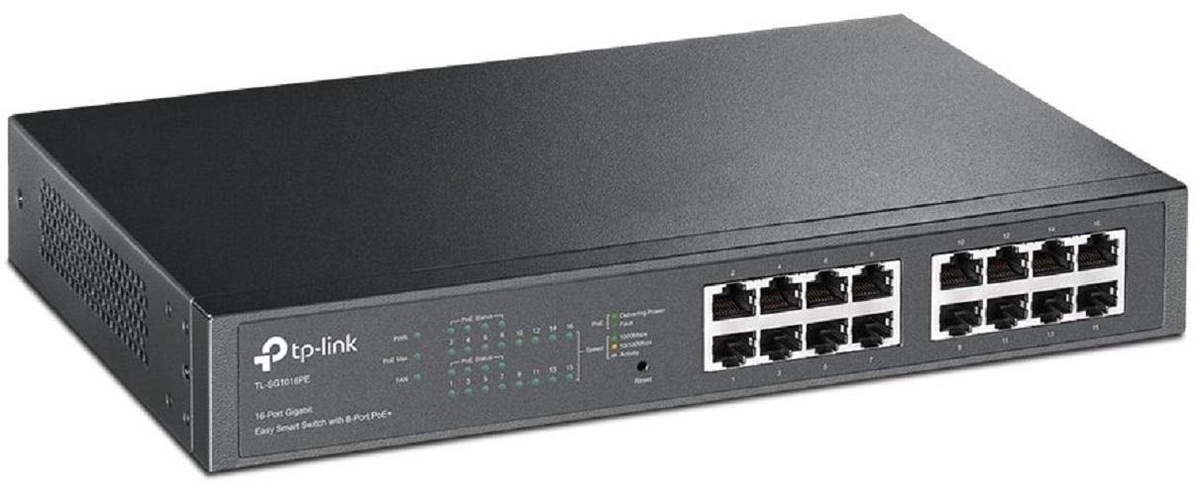Are you looking to upgrade your networking system with a 16-port PoE switch? Before making a purchase, it's important to understand the difference between managed and unmanaged switches. A managed switch offers more control and flexibility in network management, while an unmanaged switch is plug-and-play and requires no configuration. In this blog post, we'll break down the differences between these two types of switches so that you can make an informed decision for your business or home network. So sit back, grab a cup of coffee, and let's dive into the world of 16 port PoE switches!
Managed vs. Unmanaged 16 Port PoE Switches
There are several key differences between managed and unmanaged 16 port PoE switches. Managed switches offer a higher level of control and configuration options than unmanaged switches. For example, you can use a web browser to access a management interface on a managed switch in order to configure features such as VLANs, Quality of Service (QoS), and link aggregation. Unmanaged switches, on the other hand, typically do not offer any management interface or configuration options.
In addition, managed switches typically support more advanced features than unmanaged switches. For example, many managed switches support dynamic routing protocols such as OSPF or BGP in order to allow them to exchange routing information with other devices on the network. Managed switches may also offer additional security features such as access control lists (ACLs) and data encryption.
Finally, managed switches are usually more expensive than unmanaged switches since they offer more features and require more complicated hardware. However, the increased cost is often worth it for businesses that need the extra control and flexibility that a managed switch provides.
The Pros and Cons of Managed 16 Port PoE Switches
If you’re looking to add PoE capabilities to your network, you’ll need to decide between a managed or unmanaged port PoE switch. Both have their pros and cons, which we’ll explore in this article.
Managed port PoE switches give you more control over your network. You can configure settings and monitor activity from a central location. This is ideal for larger networks or those that require more complex configurations.
Unmanaged port PoE switches are easier to set up and don’t require any configuration. They’re typically less expensive than managed switches, making them a good option for small networks or those on a budget.
Now that you know the difference between managed and unmanaged port PoE switches, let’s take a closer look at the pros and cons of each:
Managed Port PoE Switches: Pros
-More control over your network
-Can configure settings
-Monitor activity from a central location
-Ideal for larger networks or those that require more complex configurations
Managed Port PoE Switches: Cons
-More expensive than unmanaged switches
-Require configuration and management
-May be too complex for small networks
Unmanaged Port PoE Switches: Pros
-Easy to set up
-No configuration required
-Less expensive than managed switches
-Good option for small
The Pros and Cons of Unmanaged 16 Port PoE Switches
If you’re looking to deploy a Power over Ethernet (PoE) network, you may be wondering whether to go with a managed or unmanaged PoE switch. In this article, we’ll help you understand the key differences between managed and unmanaged PoE switches, as well as the pros and cons of each type of switch.
Managed PoE switches offer more control and flexibility than unmanaged switches, but they also require more configuration and management. Unmanaged PoE switches are easier to set up and don’t require as much ongoing maintenance, but they offer less control over your network.
Let’s take a closer look at the pros and cons of each type of switch:
Managed PoE Switches: Pros
-More control over your network: Managed PoE switches give you more granular control over your network, including the ability to set up Quality of Service (QoS), monitor traffic, and configure port security.
-Greater flexibility: Managed switches also offer greater flexibility when it comes to expanding or reconfiguring your network.
-Improved security: With managed switches, you can also implement security features like access control lists (ACLs) to help protect your network from unauthorized access.
Managed PoE Switches: Cons
-More expensive: Managed PoE switches generally cost more than unmanaged switches.
-Requires more technical expertise
Which is the Better Option for You?
If you are wondering which type of PoE switch is best for your needs, managed or unmanaged, there are a few things to consider. Managed PoE switches offer more control and features than unmanaged switches, but they also come at a higher price point. Unmanaged PoE switches are a good option for those who do not need the extra features and want to save some money. Here is a more detailed look at the two types of PoE switches to help you decide which option is best for you:
Managed PoE Switches:
- More expensive than unmanaged switches
- Offer more control and features, such as the ability to remotely manage and monitor the switch
- Ideal for larger networks or those who need more granular control over their network
Unmanaged PoE Switches:
- More affordable than managed switches
- Lack some of the advanced features of managed switches, but still offer basic switching capabilities
- Perfect for small networks or those who do not need advanced features
Conclusion
Understanding the difference between managed and unmanaged 16 port PoE switches can help you make a more informed decision when it comes to choosing the right switch for your business. Managed switches offer more advanced features such as VLANs, QoS, and port mirroring which are great for larger networks that need greater control. Unmanaged switches are perfect for small home or office networks as they require less technical knowledge and maintenance to keep them running properly. Whether you decide on a managed or unmanaged model, there's no doubt that having one of these networking tools in your arsenal will benefit your network greatly.


No comments yet